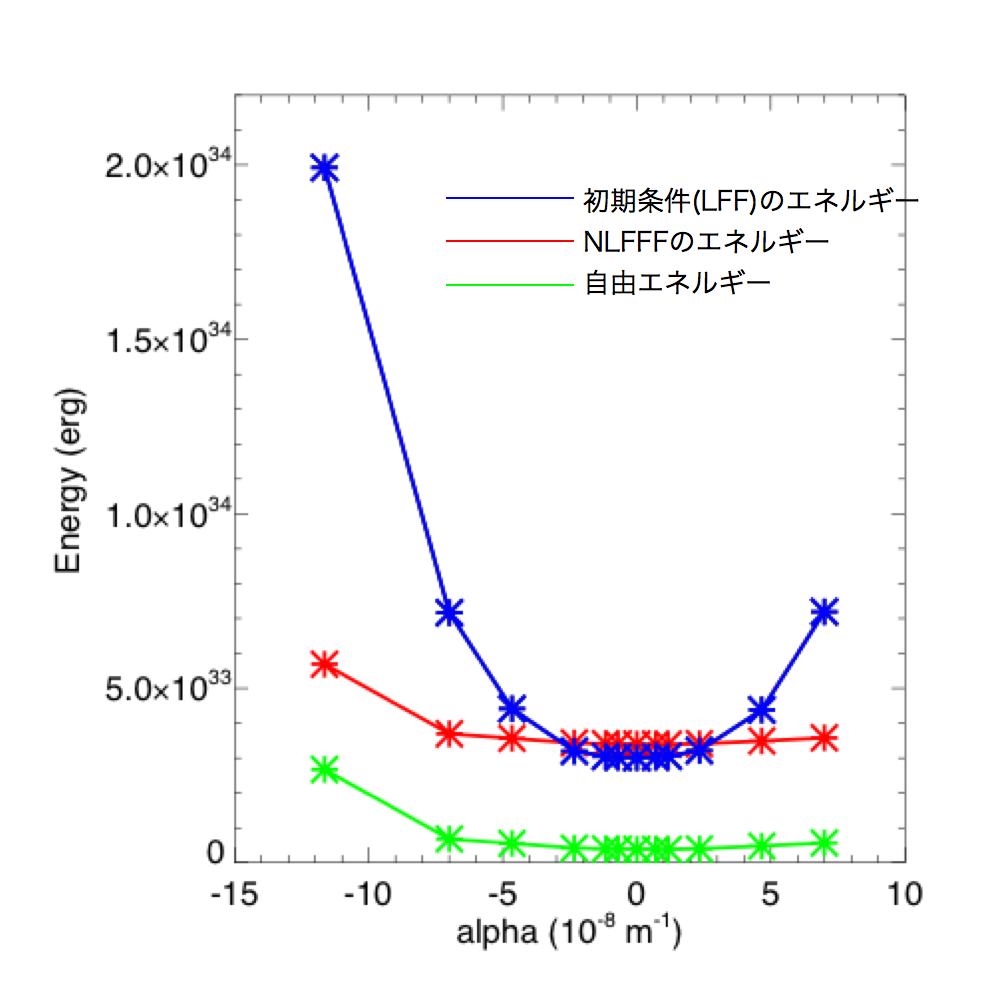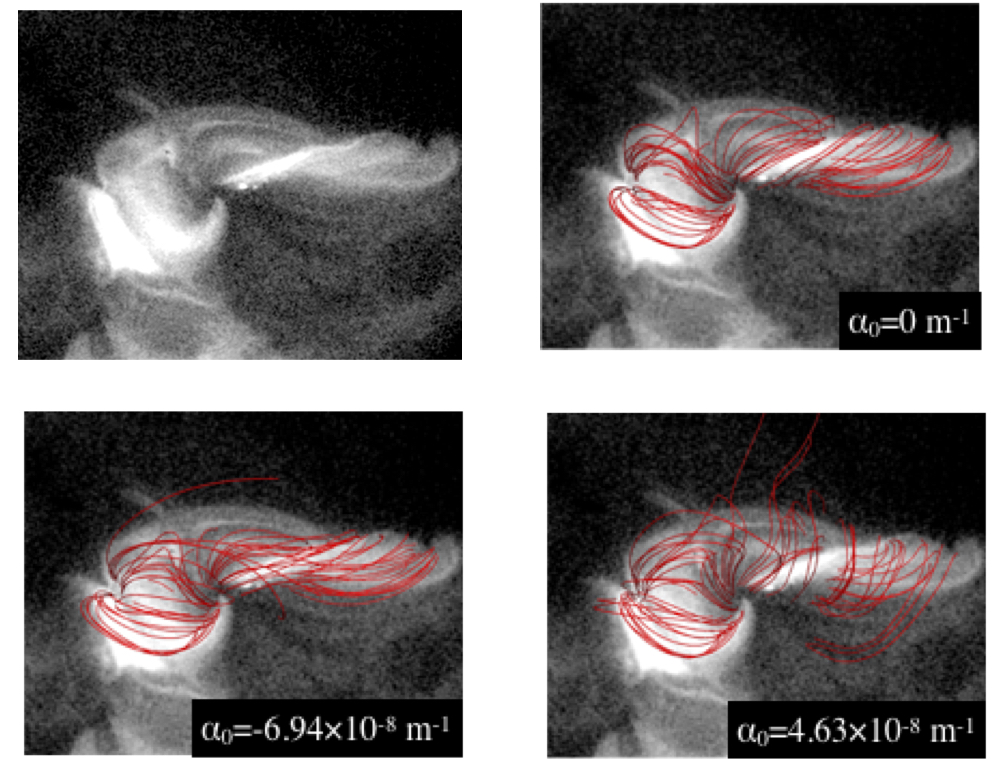NLFFF calculation of the solar coronal magnetic field based on Hinode observations
JAXA Supercomputer System Annual Report April 2017-March 2018
Report Number: R17EU0912
Subject Category: Space and Astronautical Science
- Responsible Representative: Masaki Fujimoto, Department of Solar Sciences, ISAS
- Contact Information: Toshifumi Shimizu shimizu.toshifumi@jaxa.jp
- Members: Toshifumi Shimizu, Yusuke Kawabata, Takahiro Hasegawa, Tamafumi Doi, Yumi Bamba
Abstract
The purpose of this project is to physically understand the mechanisms responsible for the occurrence of solar flares. The Hinode satellite has been accurately measuring magnetic fields spatially distributed at the solar surface. Using maps of the measured magnetic fields, we infer 3D magnetic field structures in the solar corona by performing 3D magnetohydrodynamics simulations. With 3D magnetic field structures derived from the simulations, we promote studies for exploring physical mechanisms involved in the occurrence of solar flares.
Reference URL
N/A
Reasons for using JSS2
We perform 3D magnetohydrodynamics numerical simulations by using vector magnetic field data acquired with the Hinode satellite in order to infer 3D magnetic field structures in the corona. We need large computational resource in order to perform three-dimensional magnetohydrodynamics simulations.
Achievements of the Year
Nonlinear force-free field (NLFFF) modeling is a useful tool to infer the three-dimensional magnetic fields in the solar corona, where the force-free approximation is valid. If we give the magnetic field observed at the solar surface as a boundary condition, we can solve this nonlinear equation. However, the NLFFF modeling is known to have some uncertainties. We investigate one of the uncertainties; Initial condition dependency. Usually, NLFFF calculation starts from potential field. In our study, we used liner force-free field(LFFF) and investigated how the NLFFF solutions are affected by the initial condition. We found that the total magnetic energy and free energy is independent from the initial condition (Fig.1), although the shape of the field lines are different among each solution (Fig.2). While the difference of the shape of the field lines is small in the lower atmosphere, it becomes larger in the heigher region. This is because the field lines in the lower atmosphere is affected by the bottom boundary and tends to be independent from the initial condition.

Fig.1: Magnetic energy of the initial condition (blue), NLFFF(red), and free energy(green, the difference between NLFFF and potential field)
Publications
■ Peer-reviewed papers
1)Y. Kawabata, S. Inoue, and T. Shimizu, “Non-potential Field Formation in the X-shaped Quadrupole Magnetic Field Configuration”, The Astrophysical Journal, 842, 106, 2017
■ Presentations
1)Y. Kawabata, A. Asensio Ramos, S. Inoue, T. Shimizu:”Comparison between chromospheric field derived from He I 10830 A observation and nonlinear force-free field modeling from photosphere”, ASJ meeting, Hokkaido University, September 2017.
2)Takahiro Hasegawa, Toshifumi Shimizu: “Reversed Rotation of a Sunspot Associated with the X2.1 flare in NOAA 12297”, Daiwa-Adrian Workshop, London, UK, July 2017.
3)Takahiro Hasegawa, Toshifumi Shimizu: “Reversed rotation of a sunspot and large-scale flare”, ASJ meeting, Hokkaido University, September 2017.
3)Takahiro Hasegawa, Toshifumi Shimizu, “Reversed Rotation of the Well-Developed Sunspot Associated with an X-class Flare”, Helicity Thinkshop, Tokyo, November, 2017
4)Takahiro Hasegawa, Toshifumi Shimizu:”Observational studies on magnetic helicity associated with solar flares”, 25th Hinode-Laboratory Plasma meeting, Tokyo University, February, 2018
■ Other
1) Takahiro Hasegawa: “Observational Studies on Magnetic Helicity Associated with Solar Flares”, Master thesis, The University of Tokyo, March 2018.
Usage of JSS2
Computational Information
- Process Parallelization Methods: MPI
- Thread Parallelization Methods: N/A
- Number of Processes: 12
- Elapsed Time per Case: 5.00 hours
Resources Used
Fraction of Usage in Total Resources*1(%): 0.13
Details
Please refer to System Configuration of JSS2 for the system configuration and major specifications of JSS2.
| System Name | Amount of Core Time(core x hours) | Fraction of Usage*2(%) |
|---|---|---|
| SORA-MA | 0.00 | 0.00 |
| SORA-PP | 62,736.30 | 0.79 |
| SORA-LM | 0.00 | 0.00 |
| SORA-TPP | 84,134.72 | 9.39 |
| File System Name | Storage Assigned(GiB) | Fraction of Usage*2(%) |
|---|---|---|
| /home | 033.65 | 0.02 |
| /data | 334.59 | 0.01 |
| /ltmp | 6,835.94 | 0.52 |
| Archiver Name | Storage Used(TiB) | Fraction of Usage*2(%) |
|---|---|---|
| J-SPACE | 0.00 | 0.00 |
*1: Fraction of Usage in Total Resources: Weighted average of three resource types (Computing, File System, and Archiver).
*2: Fraction of Usage:Percentage of usage relative to each resource used in one year.
JAXA Supercomputer System Annual Report April 2017-March 2018



